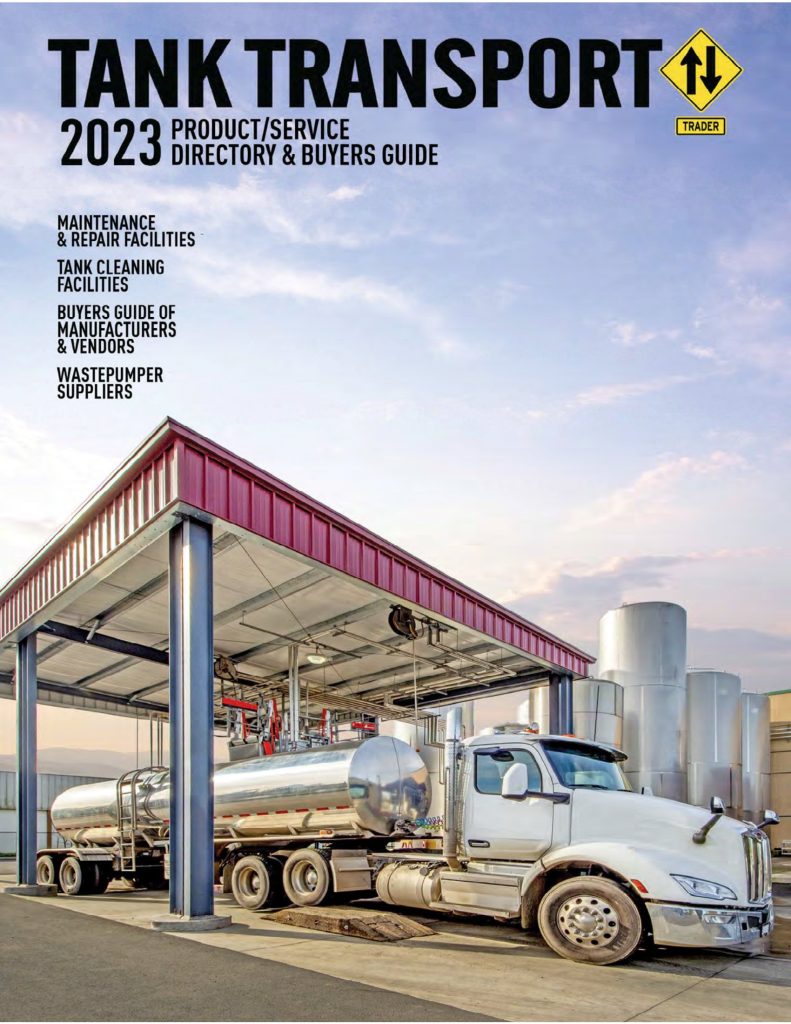- Discover how Truck Driver Retention Strategies are evolving to reduce turnover and cut recruiting costs.
- Learn which driver pay trends and home time models resonate most with modern drivers.
- Uncover how the freight economy outlook can shape your fleet’s long-term stability and driver satisfaction.

Driver retention is more than an HR issue—it’s a strategic necessity for any fleet. (Photo by Caleb Ruiter)
Implementing Truck Driver Retention Strategies has become paramount as more carriers face heightened turnover rates and a rapidly changing freight economy outlook. Recent trucking industry survey data reveals a growing demand for competitive compensation, improved work-life balance, and modernized operations to keep drivers engaged and committed. Even with some signs of economic softening, turnover remains a persistent issue across large and small fleets. According to recent analysis, driver turnover at many large truckload carriers still hovers near 90%, underscoring a systemic challenge that impacts bottom lines and operational consistency.
Many fleets now recognize that retaining drivers is not simply an HR problem—it is a strategic imperative. Research suggests the cost of recruiting and onboarding a single driver can easily exceed $8,000–$15,000, a figure that multiplies quickly in high-churn environments. Meanwhile, technological and regulatory shifts continue to reshape the trucking landscape, prompting carriers to re-examine their pay structures, scheduling practices, and overall approach to driver satisfaction.
For more details on modern fleet operations, check out this page.
Why Truck Driver Retention Strategies Matter

Predictable earnings and modern benefits keep drivers engaged in the face of market volatility.
Carriers across the industry are reevaluating how they manage both current and prospective drivers. High driver turnover rates negatively impact bottom lines through increased recruitment costs, unsteady fleet capacity, and disruption to customer service. When experienced drivers leave, carriers lose institutional knowledge and face revenue shortfalls from idle trucks. Estimates show that each unseated truck can cost up to $1,000 per day in lost income.
Enjoying our insights?
Subscribe to our newsletter to keep up with the latest industry trends and developments.
Stay InformedBy investing in tailored approaches that address driver satisfaction, companies can reduce churn, enhance operational stability, and build stronger reputations as driver-centric employers. This is crucial in light of demographic shifts—many drivers are nearing retirement age, while fewer young people are entering the profession. The shortage of qualified drivers is a worldwide concern: In North America alone, the shortfall could exceed 100,000 drivers in coming years, as the freight economy recovers and demand outstrips labor supply.
To learn more about the broader trucking industry, check out this page.
Shortages in qualified drivers have persisted for years, exacerbated by evolving driver pay trends and broader economic shifts. While some fleets boosted mileage rates in 2023–2024, many drivers experienced fewer miles during the freight slowdown, leading to a net decrease in weekly pay. With the freight economy outlook showing signs of gradual improvement, more drivers are exploring new opportunities—especially with carriers offering structured home time management, predictable pay, or modern safety technology. In Europe, Australia, and Canada, similar pressures persist—driver workforces are aging, and carriers must adapt or risk being left behind when economies rebound.
To understand more about the challenges facing truck drivers, visit this link.
What Are the Core Factors Behind Turnover?

Transparent compensation models remain at the core of successful recruiting tactics. (Photo by Quintin Gellar)
In the most recent driver survey by Professional Driver Agency and Conversion Interactive Agency, 41% of drivers indicated they were actively looking for a new driving job—a record high since the survey began. This figure is up from 33% a year ago. The survey, conducted before the recent presidential election, also found that half of drivers expect next year to be better than this year. Meanwhile, more than one in five who are not currently seeking a new job say they might do so once the economy improves.
Several interlinked factors contribute to carrier turnover. Understanding them is crucial for crafting effective truck driver retention strategies:
- Compensation Gaps: Inconsistent pay structures and a lack of transparent bonus programs remain key pain points. Surveys show 62.8% of job-seeking drivers cite unpredictable weekly incomes as a top reason they look elsewhere. Another study reported that 82% of surveyed drivers specifically want predictable pay.
- Work-Life Balance: Despite growing importance, some drivers still prioritize higher earnings over extra home time. In fact, more than half said they would not accept a reduction in pay to improve home time. However, younger drivers and those with families increasingly desire flexible scheduling and reliable home visits.
- Driver Demands and Satisfaction: Features like modern equipment, empathetic dispatchers, and robust health benefits add to overall driver happiness. Surveys show 66% want better home time, 49% want consistent miles, 48% seek better benefits, and 42% look for newer equipment.
- Economic Pressures: A sluggish economy can mask turnover issues as drivers hesitate to switch jobs. Once conditions rebound, “wait-and-see” drivers often depart for better opportunities, triggering rapid turnover surges. More than 60% of drivers either are actively searching or will search when the economy improves.
- Regulatory Constraints: From hours-of-service (HOS) rules to potential overtime legislation, new regulations can reshape driver routines. If these policies are not managed well at the carrier level, frustration mounts quickly.
Turnover is not a purely American phenomenon. In Canada, turnover is high among long-haul fleets, partly due to long distances and harsh conditions. In Europe, carriers wrestle with complex cross-border rules and driver shortages, especially in Western countries reliant on labor from Eastern Europe. Australia grapples with “road train” routes that demand extended periods away from home. Despite regional differences, the core issues—pay fairness, home time, equipment quality, and respectful treatment—remain universally relevant.
“In Canada, turnover is high among long-haul fleets, partly due to long distances and harsh conditions, while Western European carriers grapple with complex cross-border rules. Despite these regional differences, the core issues—pay fairness, home time, equipment quality, and respectful treatment—remain globally relevant.”
To explore additional driver retention strategies, check out this page.
Key Insights into Driver Compensation

Carriers that prioritize consistent pay and home time gain a clear competitive edge.
Compensation stands at the forefront of driver recruiting tactics. Recent data indicates that pay dissatisfaction is the number-one cause of driver churn in most major trucking markets. Surveys show that reliable weekly earnings, bonuses linked to performance or fuel efficiency, and transparent pay structures help retain experienced drivers. When fleet management teams adapt to driver pay trends, they often see reduced turnover and a more stable workforce.
On the legislative front, the proposed “Guaranteeing Overtime for Truckers Act” in the U.S. aims to remove long-standing overtime pay exemptions for interstate drivers. Proponents believe it could elevate driver wages and attract new entrants to the profession. Some states have also imposed rules mandating paid rest breaks or layover pay. In regions like Europe, stricter wage and rest regulations are pushing fleets to adopt more consistent pay models, while in Canada, certain provinces are exploring ways to standardize training and compensation to boost retention.
To stay updated on the Guaranteeing Overtime for Truckers Act, follow this link.
Driver Pay Expectations
- Predictable Earnings: Around 82% of surveyed drivers emphasize the need for consistent wages. Many carriers are now experimenting with guaranteed weekly pay to reduce the fluctuations that come from changing freight volumes.
- Competitive Benefits: Retirement planning, health insurance, and paid time off continue to influence driver loyalty. European carriers often feature more robust benefits and mandatory holiday pay, influencing retention in ways North American fleets are increasingly considering.
- Performance Incentives: Carriers that reward strong driving records, high fuel efficiency, and on-time deliveries can see notable improvements in long-term retention. Some implement gamified scorecards, allowing drivers to accumulate points redeemable for bonuses or merchandise.
Regulatory developments can intensify the need for higher or more consistent pay. In some Australian and U.S. markets, mandatory rest rules and ELD (electronic logging device) requirements limit drivers’ hours, leading to fewer total miles and unpredictable take-home pay. Fleets that bridge these gaps by offering hourly pay for detention times or higher base rates often stand out as more driver-friendly.
For an in-depth look at understanding driver compensation, visit this link.
“Fleets that embrace transparent compensation and predictable income models often find themselves well-positioned when economic conditions rebound and drivers weigh their employment options.”
Understanding the Freight Economy Outlook

Empathy in leadership often transforms short-term hires into long-term team members.
While recent indicators suggest a slow but steady recovery, many carriers remain cautious. High operational costs, coupled with regulatory expenses, can limit how much companies can invest in retention. However, data implies that once the economic recovery gains momentum, over 60% of drivers either are actively searching for new positions or plan to do so soon. This underscores the urgency to refine truck driver retention strategies before driver turnover escalates.
The International Road Transport Union (IRU) reports that Europe may face over 425,000 unfilled truck driver roles, projecting even higher figures if economic and demographic pressures intensify. In North America, the American Trucking Associations caution that the driver shortage could balloon to over 160,000 by 2031 if younger drivers do not join at higher rates. Carriers in Australia face similar challenges, citing harsh long-haul conditions and an aging workforce, while Canada contends with a lack of new entrants to replace retiring veterans.
In short, carriers worldwide are engaged in a tight competition for qualified drivers. Once freight demand picks back up, fleets unable to offer compelling pay, modern equipment, and strong driver support risk hemorrhaging their workforce.
To learn more about addressing the driver shortage, explore this page.
How Technology Shapes Truck Driver Retention Strategies

Technology-driven scheduling can cut wasted time and elevate driver morale.
Technology plays a critical role in reducing the stress and unpredictability associated with daily driving tasks. Integrated fleet-management software that optimizes routes, monitors vehicle health, and provides real-time updates can drive driver satisfaction by:
- Shortening Wait Times: Automated check-ins at loading docks reduce detention. Route-planning AI can also pair drivers to loads efficiently, cutting empty miles.
- Enhancing Transparency: Clear communication on freight availability, scheduling changes, and routes—sometimes facilitated by mobile apps—helps drivers feel informed and respected.
- Reducing Compliance Costs: Streamlined record-keeping and electronic logging devices (ELDs) help carriers meet regulatory standards more efficiently, minimizing errors and improving driver workflows.
Learn more about electronic logging devices (ELDs), visit this page.
Advanced driver assistance systems (ADAS) are another emerging technology, helping drivers stay safer and more relaxed on long hauls. Collision mitigation, lane departure warnings, and adaptive cruise control can relieve some strain while boosting a carrier’s safety record. As fleets invest in predictive maintenance, drivers experience fewer breakdowns on the road, enhancing reliability and job satisfaction.
When technology supports better planning, drivers have fewer frustrations, which contributes to improved morale and long-term loyalty. One example: route optimization tools can also calculate realistic transit times that align with hours-of-service (HOS) rules, lessening the pressure on drivers to “beat the clock.”
For additional details on hours-of-service (HOS) rules, click here.
Balancing Home Time with Competitive Pay

Meeting drivers’ needs—equipment quality, fair pay, and respect—curbs high turnover.
While more money remains a top priority, it does not entirely overshadow home time management. About half of drivers surveyed admitted they would accept slightly lower pay if it guaranteed substantially improved home time. Yet, for the majority, losing income for extra days at home is a difficult trade-off.
Carriers that offer flexible scheduling, regular weekly or bi-weekly home visits, and localized driving options can tap into a competitive advantage. In regions like the European Union, regulations in the Mobility Package mandate drivers have the right to return home regularly, which can improve retention by normalizing work-life balance. In the U.S. and Canada, some carriers adopt bid-based routes that allow senior drivers to choose runs closer to home. When combined with fair compensation, these practices become essential components of modern truck driver retention strategies.
Real-World Examples of Reduced Driver Turnover

New legislative pushes, such as guaranteed overtime, could reshape driver compensation.
Several carriers have successfully implemented strategies that significantly reduced their driver turnover rates:
- Southern Refrigerated Transport (SRT): Implemented a feedback system using WorkHound, allowing drivers to provide anonymous feedback. This led to actionable insights that improved conditions and reduced turnover by 16%, saving the company significant amounts in potential recruitment and training costs.
- Hayes Transport: Adopted technology solutions like Drivewyze PreClear to minimize weigh station delays, enhancing driver satisfaction and reducing turnover. The implementation of new ELDs and telematics systems also improved operational efficiency and driver safety.
- Brady Trucking: Used Stay Metrics to conduct surveys at critical employment intervals, helping adjust management strategies in real time. The introduction of rewards programs and recognition for drivers also played a crucial role in reducing turnover by 31%. Brady’s leadership emphasizes a data-driven approach, using frequent feedback to align driver expectations with actual conditions.
- XPO Logistics: Shifted from broad-based sign-on bonuses to targeted incentives for hard-to-fill roles. XPO also invested in driver training schools and specialized apprenticeship pipelines, leading to a record number of full-time driver hires in late 2024 despite a softer freight market. This proactive method shows how carriers can adapt incentives as economic conditions evolve.
“These examples illustrate the importance of listening to drivers’ needs and using technology to address their concerns effectively. Whether through feedback platforms or carefully structured compensation, carriers that invest in driver satisfaction see tangible reductions in turnover.”
For insights on reducing driver turnover, follow this link.
Operational Tactics Using Technology

Work-life balance now rivals higher earnings in retaining modern drivers.
Carriers can implement technology-driven scheduling to enhance driver satisfaction and retention. Tools like dynamic scheduling software allow for more flexible and efficient routing, adapting to changes in real time and reducing unnecessary wait times or convoluted detours. Some fleets even offer mobile apps that let drivers bid on certain loads, granting a sense of autonomy.
Proactive training programs can also be set up through online platforms that provide continuous learning opportunities and regular updates on safety protocols and operational procedures. This approach keeps drivers up to date and engaged with the company’s culture and values. Some carriers have begun to gamify the process with scorecards and points that reward safe driving behaviors, fueling friendly competition and a sense of achievement among drivers.
Economic Considerations of Pay Raises Against Regulatory Costs
Balancing pay raises with regulatory or compliance costs is crucial for maintaining profitability while ensuring driver satisfaction. An effective strategy involves optimizing operational efficiencies—through route planning or automated compliance systems—and redirecting part of the savings into better driver compensation.

Shifting from one-size-fits-all scheduling to flexible routes pays dividends in loyalty.
Investing in technology that reduces overhead, such as AI-based load matching or automated detention billing, can offset the costs associated with increased pay. Many carriers find that over the long term, improved driver retention lowers overall training and recruitment expenses, more than compensating for higher wages.
In heavily regulated markets, compliance measures like digital tachographs, ELDs, or advanced safety features can initially be expensive, but they often come with long-term returns in accident reduction, insurance savings, and more consistent scheduling. Ultimately, improving driver satisfaction and working conditions can enhance retention without disproportionately escalating a carrier’s cost base.
For the latest on FMCSA regulations and compliance standards, explore this resource.
Are Drivers Expecting Better Benefits?
Beyond direct pay, drivers are looking at comprehensive benefit packages. They often include:
- Health Insurance: Coverage for drivers and families, sometimes extended to dental or vision.
- Retirement Savings: 401(k) plans, pension structures, or profit-sharing can help drivers plan long-term.
- Paid Time Off: Vacation days, personal leave, and sick days that allow drivers to recharge without income loss.

Data-driven feedback loops catch and solve driver frustrations before they escalate.
In some European countries, mandated holiday pay or sectoral wage agreements provide additional security. Australian regulations emphasize safety and fatigue management, while Canadian fleets may offer added perks like extended parental leave or flexible routes, acknowledging severe weather and long distances. By offering benefits aligned with driver expectations and local regulations, carriers foster loyalty and minimize carrier turnover.
Is Empathy the Missing Link for Retention?
Many drivers feel overlooked or treated as expendable when facing management structures that rarely communicate or acknowledge personal concerns. Industry experts suggest focusing on:
- Open Communication Channels: Regular check-ins with dispatchers and managers, supported by user-friendly communication apps.
- Recognition Programs: Celebrating milestones and safe driving records. Low-cost gestures such as gift cards, plaques, or a simple written note can build driver goodwill.
- Problem-Solving Approach: Quickly addressing complaints about faulty equipment or scheduling conflicts through real-time feedback tools.
When carriers display genuine empathy, they create a culture that resonates with drivers’ need for respect and understanding—a critical factor in driver recruiting tactics and retention. Anecdotal evidence shows that a more empathetic approach can help drivers feel valued, transforming short-term hires into loyal, long-term employees.
For more on innovative driver recruitment approaches, click here.
Conclusion

Automated route planning and ADAS technology lessen fatigue and reduce accidents.
A renewed emphasis on Truck Driver Retention Strategies is vital as carriers contend with stiff economic headwinds and shifting driver preferences. By concentrating on compensation clarity, empathetic leadership, technology-driven operations, and feasible home time arrangements, fleets can stay competitive and reduce driver turnover. Ensuring drivers feel valued and engaged ultimately creates a more resilient business model, setting the foundation for sustainable growth in any freight economy outlook.
Carriers that prioritize these fundamentals—while remaining transparent and flexible—position themselves to thrive in the midst of ongoing industry changes. As data consistently shows, high turnover is not an insurmountable obstacle; rather, it’s a sign that a carrier’s policies, pay scales, or practices need recalibration. With methods ranging from better pay structures to high-tech route optimization, investing in driver satisfaction has proven indispensable for companies determined to stand out in a rapidly evolving trucking landscape.
“It’s going to take the treatment of these people like human beings instead of like objects, which has been the case all these years. Once companies figure that out, they can drive their turnover rate way down, which ends up being economically advantageous to them. They may pay a little more, but they’re spending a lot less on training and recruiting.”
— John Larkin, Strategic Advisor at Clarendon Capital
According to both Professional Driver Agency and Conversion Interactive Agency, carriers should also calculate how much driver turnover is costing them in real terms—knowing those expenses is vital for effectively tackling retention issues. Ultimately, empathy-driven leadership and a culture that respects drivers as true professionals are just as crucial for reducing turnover as pay raises and modern technology.
Key Developments in Truck Driver Retention Strategies
- Structured Compensation Models: Transparent pay plans, guaranteed weekly income, and performance-based incentives minimize pay-related grievances.
- Empathy-Driven Culture: Fleets that emphasize open communication and genuine concern for driver well-being consistently report higher retention rates.
- Technology Adoption: Route optimization tools, automated check-ins, and streamlined compliance systems reduce stress and boost driver satisfaction. Emerging driver-assist features also enhance safety and comfort.
- Balanced Home Time: Offering flexible scheduling that aligns with personal commitments—without sacrificing competitive wages—has become a major retention differentiator.
By merging innovative technologies, respectful leadership, and comprehensive support structures, carriers can successfully implement Truck Driver Retention Strategies that reduce turnover, improve morale, and forge a stable, productive workforce ready to meet the future of freight head-on.
Explore Authoritative External Resources
Below is a curated list of external resources for further reading on driver retention, compensation, and industry regulations. Each link offers insights or data that support the themes discussed in this article.
- American Trucking Associations (ATA): Learn more about industry statistics, legislative efforts, and nationwide driver shortage data at American Trucking Associations.
- U.S. Congress – Guaranteeing Overtime for Truckers Act: Read the legislative text and follow the latest updates on proposed overtime pay for truck drivers at Senate Bill 3273.
- U.S. Department of Labor: Find current labor statistics, wage data, and supply chain assessments relevant to driver pay and retention at DOL’s official website.
- FMCSA – Federal Motor Carrier Safety Administration: Browse official rulings on hours-of-service, ELD compliance, and other federal trucking regulations at FMCSA’s official site.
- Transport Canada: View Canada-specific trucking regulations, driver licensing requirements, and long-haul compliance guidelines at Transport Canada.




















